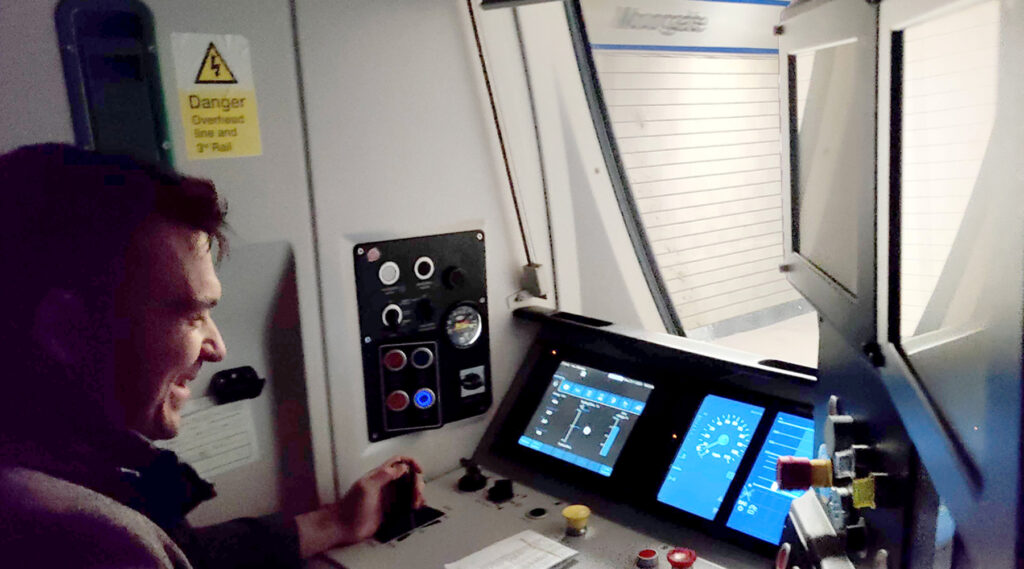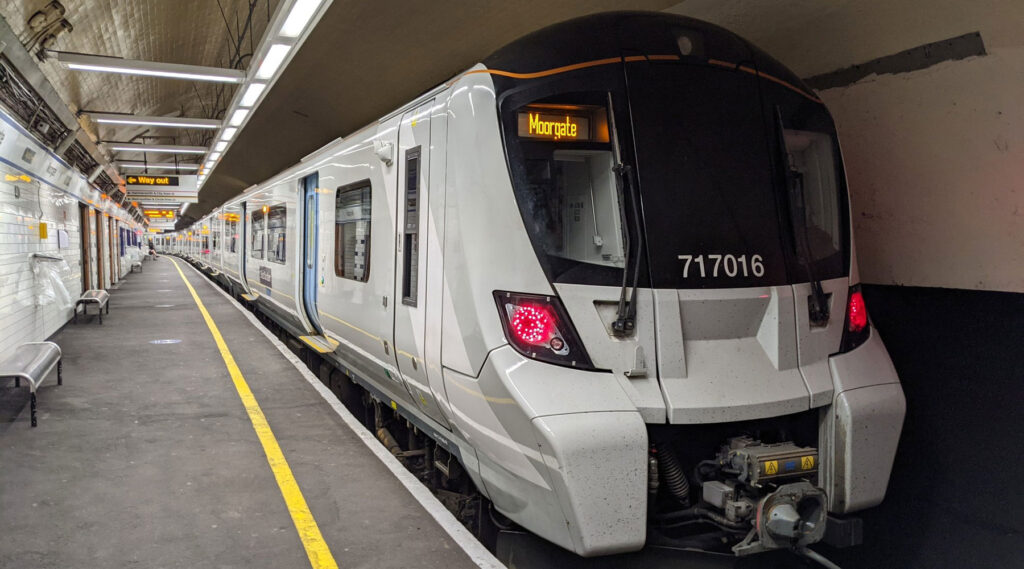Earlier this week, the trains on the Northern City Line started carrying passengers using a new signalling system, which should reduce delays on journeys between Finsbury Park and Moorgate.
The new system, the European Train Control System (ETCS), allows Network Rail to remove lineside signalling and put all that information on a display screen inside the train cabs instead. Not only does that reduce the cost of a signalling system as there’s less hardware, but there’s also a reduction in maintenance costs, as there are no longer any signals to maintain.
The old system caused around 9 hours of delays over the year due to being antiquated and harder to maintain, so was in need to updating, and it was decided to include it in a wider upgrade project for UK railway signalling.
The first section to go live, after a lot of testing, was the tunnels between Moorgate and Finsbury Park stations, but the upgrade is already being rolled out along the East Coast Mainline up to north of Peterborough, and will eventually replace all signalling in the UK.
Drivers using digital ETCS aren’t told to stop and go by fixed signals at the side of the track. Instead, they drive according to a target speed set by the system in their cab that is kept continually updated about the location of other trains by a multitude of beacons positioned along the track. The system effectively allows drivers to ‘see’ much further ahead than line-of-sight signals would ever allow, meaning trains can run more efficiently.
The technology also allows gentler braking, meaning journeys are smoother and use less energy.
Installation of ETCS on the Northern City Line has been in development since 2020, and has, until now, been tested only on trains out of passenger hours. Now that testing had been completed, the first passenger carrying train to use ETCS in the tunnels ran on Monday morning.

GTR project lead and qualified driver Oliver Turner joined the team during the first runs of the day (c) GTR
Progressively, more trains will operate with digital signalling, as more of the 250 Great Northern drivers are trained to use the technology. Traditional signals will be kept at the side of the track until everyone is trained and the old system can be switched off and the redundant equipment removed.
Oliver Turner, Head of ERTMS for GTR said: “I’m delighted for our team and I’m delighted for our passengers. Getting to this point has been a monumental cross-industry effort. It will pave the way for the wider rollout of digital signalling on the East Coast Main Line, promising better reliability for everybody.”
The next phase of the ECDP upgrade will see digital signalling introduced between Welwyn Garden City and Hitchin, on the East Coast Mainline. The first digitally signalled trains are expected to operate on this section of the route by the end of 2025.








Interesting. Good to know for my trips to the Barbican where I change from Vic at H&I to this line to Old Street/Moorgate.
Am objecting a little to your [shorthand?] naming of this line as ‘Northern City Line’. Was I the only one who thought headline referred to something on the city branch of the northern line tube? Yes, a lot of us are a little on the spectrum here, including you and me on this one! I’m sure you meant ‘Great Northern City Line’ but I guess that’s just way too cumbersome.
Network rail also refer to it as the “Northern City Line”, ref https://www.networkrailmediacentre.co.uk/news/northern-city-line-proved-ready-for-digitally-signalled-passenger-service. The train service itself uses the “Great Northern” branding, which is part of GTR.
It’s the Northern City Line – https://en.wikipedia.org/wiki/Northern_City_Line
It’s been the Northern City Line for many decades. It has had other descriptors, the only one of which I think is acceptable is Great Northern & City. Indeed, now that it serves the Great Northern suburban, reverting to GN&C would be appropriate.
Does this mean that the very slow speed approach to Moorgate, introduced for obvious reasons for those of us long enough to remember, can be eased slightly?
I suspect not. After all, the driver is still controlling the train manually and the risk of reaching the end of the tunnel at high speed still remains. I suppose the only solution would be to extend the tunnel beyond Moorgate station and add an automatic stop mechanism. Someone will no doubt correct me, should the latter already exist…
Thanks Ray, and yes I am sure that is the case. If automatic train operation (as used in the Thameslink core) was in use then I guess it may be different, but I’ve not seen any reference to that being introduced, so the crawl into Moorgate will continue for the foreseeable future.